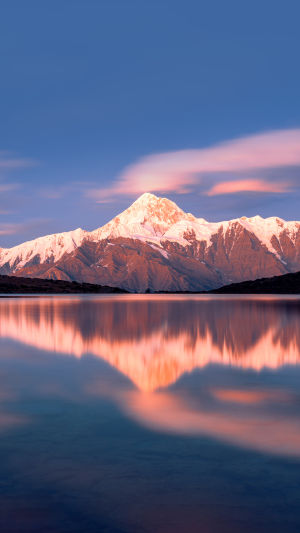Mount Everest is the tallest snow-capped mountain in the world and one of the most famous and challenging mountaineering goals on Earth. The following is a detailed introduction to Mount Everest:
1. Geographic location: Mount Everest is located in the Himalayas of Asia, straddling the border between Nepal and China (Tibet Autonomous Region). Its coordinate position is roughly 27°59′17″ north latitude and 86°55′31″ east longitude.
2. Altitude: The exact altitude of Mount Everest is 8,848.86 meters (29,031.7 feet), widely accepted as the highest mountain on Earth. However, its height may vary slightly due to crustal movement and the continuous development of measurement techniques.
3. Mountaineering history: The first successful ascent of Mount Everest was on May 29, 1953, by New Zealand mountaineer Edmund Hillary and Nepalese guide Tenzing Norgay. Since then, more and more people have challenged this snow mountain and successfully climbed to the top.
4. Summit challenge: Climbing to the summit of Mount Everest is a difficult and dangerous task that requires a high degree of physical fitness, endurance, and mountaineering skills. Climbers undergo long periods of high-altitude training to adapt to thin air and harsh weather conditions. In addition, they face the risks of snow and ice avalanches, mountain diseases such as alpine pulmonary edema and high altitude cerebral edema, and steep rock faces.
5. Mountaineering routes: Mount Everest has two main climbing routes, namely the south slope route and the north slope route. The South Slope route begins in Nepal's Everest National Park and climbs through the Himalayan glaciers and south slopes of the Himalayas. The North Slope route starts in the north of China (Tibet Autonomous Region), through the North Slope Glacier and the North Slope Climb.
6. Natural Landscape: The mountains and glaciers around Mount Everest are breathtaking. Climbers pass majestic glaciers, ice peaks, and ice canyons on their ascent while enjoying panoramic views of the majestic Himalayas.
7. Climate change and conservation: Due to the impact of global climate change, the glaciers in the Himalayas are gradually melting, which brings a series of challenges and threats to Mount Everest and other alpine environments. It becomes even more important to protect and sustainably manage the environment in these areas to ensure that future generations can enjoy these magnificent natural landscapes.
8. Naming and cultural significance: The name of Mount Everest comes from Nepalese and Tibetan, and is translated as "the forehead of the goddess of the sea". In Nepalese culture, Mount Everest is considered a sacred mountain and considered the home of the gods.
9. Ecological Diversity: The Everest region is rich in ecosystems, including alpine meadows, shrublands, coniferous forests, and glaciers. Various wild animals live here, such as snow leopards, Tibetan wild donkeys, Tibetan antelopes, etc., as well as rich bird species.
10. Mountaineering tourism: Mount Everest climbing has become an important mountaineering tourism activity, attracting explorers and travelers from all over the world. They can visit the Himalayas region of Nepal, experience the local culture and landscape, interact with the Tibetan people, and learn about the history and mountaineering traditions of Mount Everest.
11. Mountaineering records: Mount Everest has witnessed the creation and breaking of many mountaineering records. Some climbers have accomplished incredible feats such as being the youngest climber, oldest climber, fastest climber, etc. These records demonstrate the courage and perseverance of human beings, and at the same time inspire more people to pursue their goals.
12. Mountaineering safety and challenges: Although climbing Mount Everest has become the dream of many people, it is also necessary to recognize the high risks of mountaineering activities. Climbers must undergo rigorous training and preparation, including high altitude acclimatization, technical skills, and knowledge of emergency situations. Mountaineering activities require strict safety standards and regulations to ensure the safety of climbers.
The above is an introduction to some other aspects of Mount Everest. This snow-capped mountain not only has magnificent natural landscapes and challenging mountaineering conditions but also carries rich cultural and historical significance, attracting people from all over the world to come to explore and challenge.





